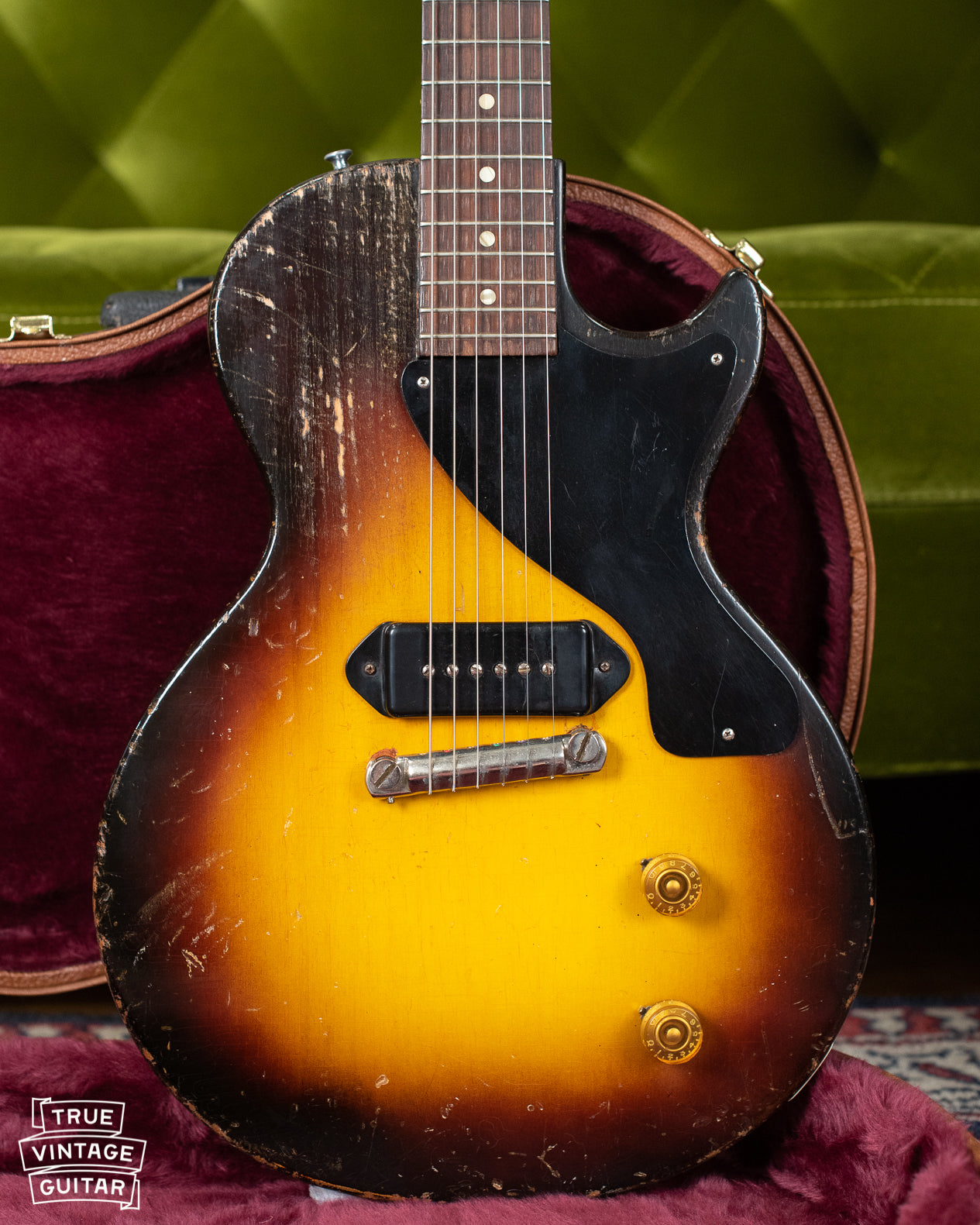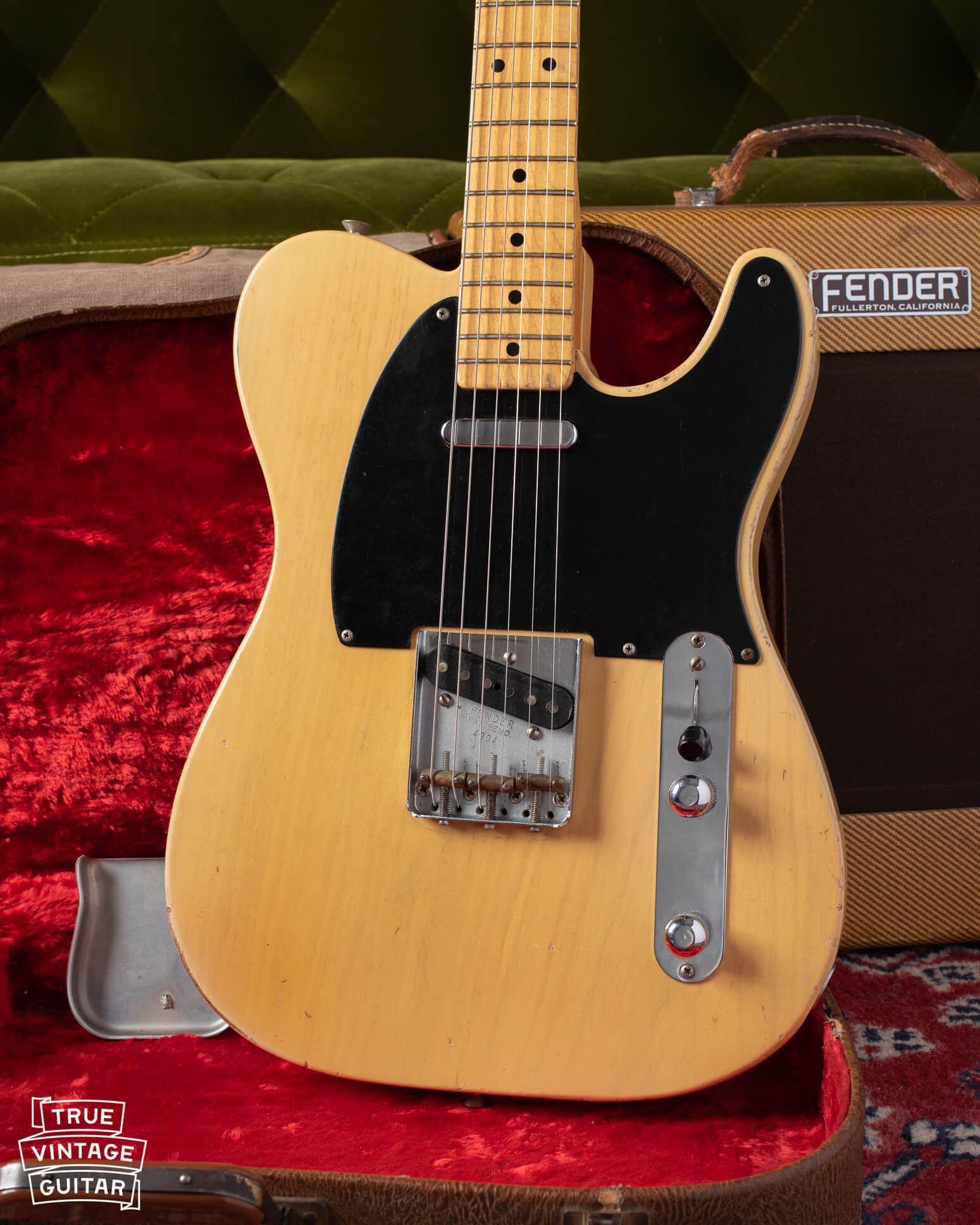This 1943 Gibson J-45 came to me in the original case with zero prior repairs. The bridge had pulled up and the bridge plate had puckered a bit so I had it expertly repaired by Jason Burns here in Birmingham, AL (Burns Instrument Repair) It came out gorgeous and the tone is truly spectacular. Collector value is one thing but true tonal superiority is quite another.
I'm always a Gibson guitar buyer but I'm especially looking for Gibson J-45 acoustic guitars with the golden banner headstock! You can contact me here to sell a vintage Gibson guitar.

Collector Value
I don't normally enjoy talking up the collector value on vintage instruments because it's usually pretty obvious. However, this one deserves a bit of press for its rare features including the Mahogany top, no truss rod neck and original Lifton case. There's more information on banner era instruments in John Thomas' recent book, Kalamazoo Gals.
During the height of World War II the United States government imposed materials restrictions on manufacturing that cause companies like Gibson to improvise a bit. Among those restrictions was Spruce which was used for guitar tops as well as steel, used for truss rods and tuners. Gibson began running low on good quality Spruce in late 1942 so they began using 3 and 4 pieces glued together. That only lasted a short time until the started using Mahogany for the tops. Mahogany tops can be found on banner era models between late 1942 and midway through 1944 when they were acquired by CMI. Gibson began using Spruce for Sitka, AK after the buyout. Truss rods seem to follow a similar time table in that guitars without truss rods started being produced at random in late '42/early '43. Truss rods reappeared as a standard sometime in 1944. Tuners were being produced with thinner cogs which was supposed to save steel (albeit very little).

This guitar has all those juicy wartime features. Instead of a truss rod, Gibson produced the necks a bit thicker and fuller with a triangular Maple rod in the center of the neck under the fretboard. These necks are surprisingly stable and this one is no different. The tuners have held up well too and don't seem to want to give up. If I was to play this daily I would certainly replace them in order to preserve the originality. The original Lifton case is in great shape with the original handle.

Player Value
The most surprising thing about this one was definitely the great tone is has. It's loud but warm with woody overtones. It's has the Americana dry thump but also crisp, articulate highs. It really is all that they say they should be. These banner era guitars just have the Gibson tone.
My go-to playing style is fingerstyle blues using finger picks. Gibsons usually lend themselves to this type of playing so it was no surprise when it sounded- and played- great. The real surprise was when I flatpicked and it was loud and cut so well! I couldn't have hoped for it to sound any better. It does everything I need for an acoustic and then some.

"Squirt" Soda
This kind of thing was very common back in the 30s and 40s. People wanted to adorn their instruments with stickers featuring their initials, puppies and kittens, brands, etc. This one happened to receive a Squirt soda sticker on the back. I love this sort of character as long as it isn't too distracting from the rest of the guitar. This one is placed inconspicuously on the back so I'm happy to let it remain there for the duration of my ownership.



